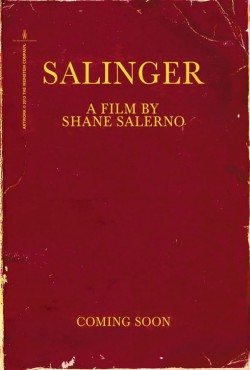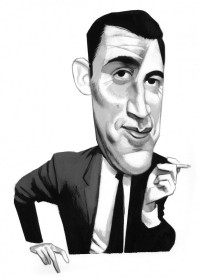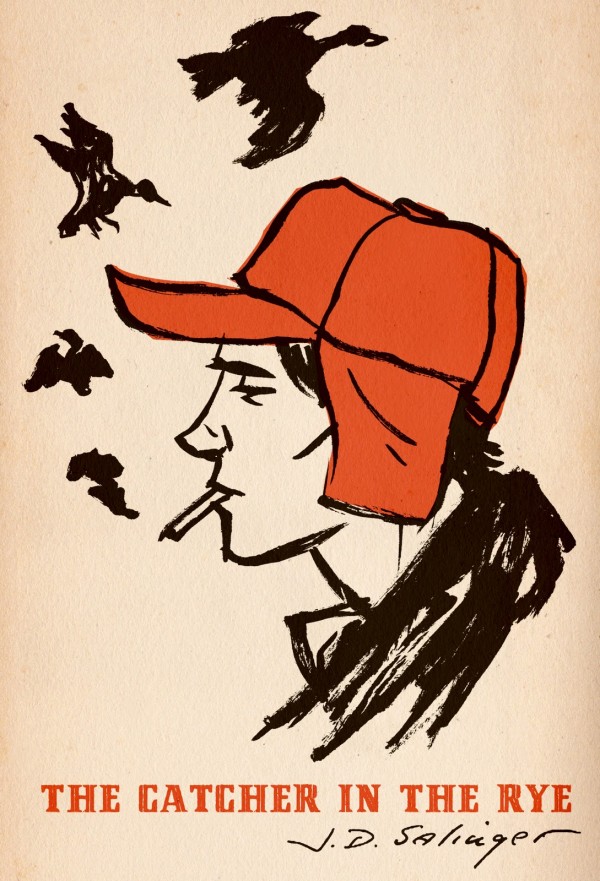PBS: THIRTEEN’s American Masters launches its 28th season with the series’ 200th episode: the exclusive director’s cut of Shane Salerno’s documentary, Salinger, premiering nationally Tuesday, January 21, 9-11:30 p.m. on PBS (check local listings) with 15 minutes of new material not seen in theaters. Featuring never-before-seen photographs, personal stories and moments from J.D. Salinger’s (Jan. 1, 1919 – Jan. 27, 2010) life and harrowing service in World War II, Salerno’s new director’s cut expands his intimate portrait of the enigmatic author of The Catcher in the Rye. Salerno’s 10-year journey culminates in the first work to get beyond the author’s impenetrable wall of privacy and seclusion. While there have been over 100 academic books examining Salinger’s work in exhaustive detail, the story that no one had uncovered was that of Salinger’s remarkable life. Salerno overcame considerable obstacles to do this and present the material as a documentary film. Salinger never sat for a formal interview during his life, and there were no video or audio recordings of him and very few photographs. Additionally, legal restrictions specifically prevented Salerno from quoting virtually any of Salinger’s work on camera or from having anyone read or perform any of Salinger’s work. Regardless, American Masters: Salinger shows in vivid detail the connections between the  author’s life and work, and the people and events that inspired his most celebrated fiction. The film is structured not as a traditional cradle-to-grave biography, but instead as a mystery that takes viewers deep inside Salinger’s private world. It operates on two engines: the first is an investigative thriller and the second is a character study of a complex man who walked away from the world at the height of his fame.
author’s life and work, and the people and events that inspired his most celebrated fiction. The film is structured not as a traditional cradle-to-grave biography, but instead as a mystery that takes viewers deep inside Salinger’s private world. It operates on two engines: the first is an investigative thriller and the second is a character study of a complex man who walked away from the world at the height of his fame.
Detailing pivotal experiences in Salinger’s life from the 1940s, Salerno illustrates how they influenced Salinger’s writing and personal relationships for the rest of his life: his dogged pursuit of publication in The New Yorker despite numerous rejections through to his first success with “Slight Rebellion Off Madison” (1946); his relationship with Eugene O’Neill’s daughter Oona, who at 18 married the 53-year-old Charlie Chaplin; his literary breakthrough with “A Perfect Day for Bananafish” (1948) in The New Yorker; and, most importantly, his service in World War II, which began with the Allied invasion of Normandy. During his army years, Salinger developed a friendship with Ernest Hemingway; suffered mental collapse after spending nearly a full year in combat; investigated Nazis and entered Dachau concentration camp as part of the Counterintelligence Corps; and in Germany met and married his first wife Sylvia Welter, whom he divorced shortly after their move to the U.S. when he suspected she was a Nazi spy. Through these tumultuous years of combat and horror, Salinger kept writing and worked on The Catcher in the Rye, a 10-year project published in 1951.
American Masters: Salinger delves into his many relationships with young women, featuring Jean Miller and Joyce Maynard; his literary success and total retreat from the limelight to Cornish, N.H.; his self-imposed isolation from his family and the world to write; his religious fanaticism; his rare and dramatic interactions with the press; and, above all, the literary secrets he left behind after his death. The documentary features interviews with some 150 subjects including Salinger’s friends, colleagues and members of his inner circle who speak on the record for the first time, as well as previously unseen film footage, photographs and other materials. Participants including E.L. Doctorow, Tom Wolfe, Gore Vidal, Pulitzer Prize-winners A. Scott Berg and Elizabeth Frank, actors Martin Sheen, Philip Seymour Hoffman, Edward Norton, John Cusack, Danny DeVito, playwright John Guare and Oscar-winning screenwriter Robert Towne all share Salinger’s influence on their lives, their work and the broader culture. MORE
DAVE EGGERS: To me the question of whether or not he continued to write strikes at the heart of the nature of writing itself. If he indeed wrote volumes and volumes about the Glass family, as has been claimed, it would be such a curious thing, given that the nature of written communication is social; language was created to facilitate understanding between people. So writing books upon books without the intention of sharing them with people is a proposition full of contradictory impulses and goals. It’s like a gifted chef cooking incredible meals for forty years and never inviting anyone over to share them.
 My own pet theory is that he dabbled with stories for many years, maybe finished a handful, but as the distance from his last published work grew longer, it became more difficult to imagine any one work being the follow-up; the pressure on any story or novel would be too great. And thus the dabbling might have continued, but the likelihood of his finishing something, particularly a novel, became more remote. And so I think we might find fragments of things, much in the way “The Original of Laura” was found. But there’s something about the prospect of actually publishing one’s work that brings that work into focus. That pressure is needed, just like it’s needed to make diamonds from raw carbon.
My own pet theory is that he dabbled with stories for many years, maybe finished a handful, but as the distance from his last published work grew longer, it became more difficult to imagine any one work being the follow-up; the pressure on any story or novel would be too great. And thus the dabbling might have continued, but the likelihood of his finishing something, particularly a novel, became more remote. And so I think we might find fragments of things, much in the way “The Original of Laura” was found. But there’s something about the prospect of actually publishing one’s work that brings that work into focus. That pressure is needed, just like it’s needed to make diamonds from raw carbon.
Of course, the possibility most intriguing—and fictional-sounding—would have Salinger having continued to write for fifty years, finishing hundreds of stories and a handful of novels, all of which are polished and up to his standards and ready to go, and all of which he imagined would be found and published after his death. That, in fact, he intended all along for these works to be read, but that he just couldn’t bear to send them into the world while he lived. MORE

